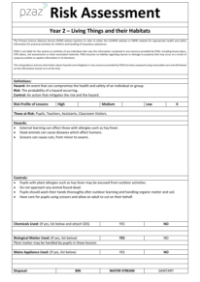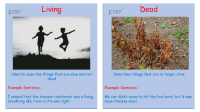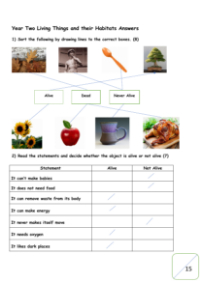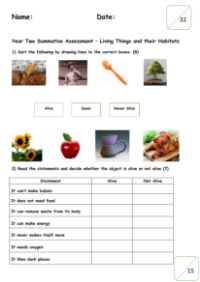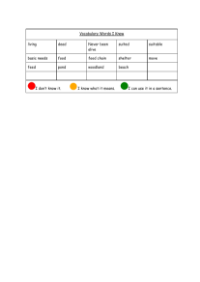Living Things and their Habitats - Knowledge Organisers
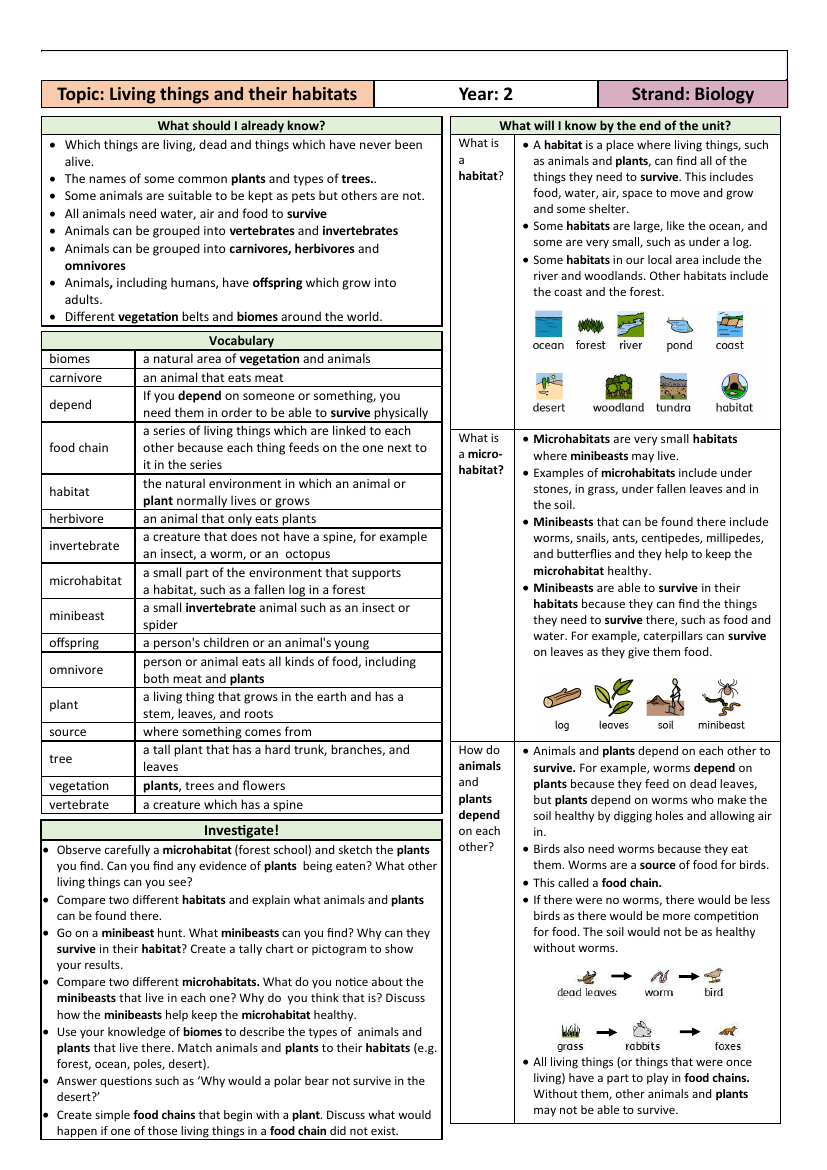
Science Resource Description
Students in Year 2 will delve into the fascinating world of biology, exploring living things and their habitats. They will begin with foundational knowledge, understanding the distinction between living, dead, and non-living entities, and recognizing common plants and trees. It's essential for them to know that while some animals make suitable pets, others do not, and that all animals require water, air, and food to survive. They'll learn about the classification of animals into vertebrates and invertebrates, as well as carnivores, herbivores, and omnivores. The concept of animals having offspring that grow into adults is also covered, along with the diversity of vegetation belts and biomes across the globe. The vocabulary section equips students with terms such as 'biomes', 'carnivore', 'habitat', 'herbivore', 'invertebrate', 'microhabitat', and 'vertebrate', providing them with a solid linguistic foundation to describe and understand the natural world.
Through practical investigations, students will observe and sketch plants within a microhabitat, such as a forest school, noting any signs of consumption by other living things. They'll compare different habitats, embark on minibeast hunts, and create visual representations of their findings. Discussions will focus on the role of minibeasts in maintaining the health of their environments and the suitability of various animals and plants within specific biomes. The unit encourages critical thinking with questions like why certain animals would not survive in alien habitats and what the consequences would be if an element of a food chain ceased to exist. By the end of the unit, students will have a comprehensive understanding of habitats, microhabitats, and the interdependence between animals and plants, culminating in their ability to construct simple food chains and appreciate the importance of each organism within an ecosystem.


